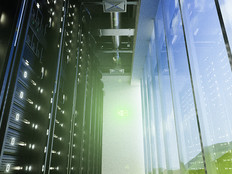Consolidation Drives the Upgrade
When Steve Devine joined fellow network engineer Dave Sipes in building a consolidated data center four years ago, the main goals were to improve capacity, heating and cooling, and bandwidth.
“We had an aging data center that needed to be upgraded to consolidate the multiple small closets scattered all over the campus,” says Devine, network engineer for the institutional data center at Lawrence Livermore National Laboratory (LLNL) in Livermore, Calif.
“As we built the data center, one of our goals was to collapse these smaller closets into the data center and utilize that single footprint in a more efficient way,” adds Devine.
The institutional data center supports DNS, e-mail, Active Directory and the main applications and services that help LLNL run its affairs.
When Devine came on board, he and Sipes built the new data center in quadrants. The first quadrant was built with Cisco 6509 switches, which were used as the core and for the access-layer (end-of-row) connectivity.

“After we built the data center and got the core quadrant up, it was time to move onto the next quadrant, and that’s when Cisco was just bringing out the Nexus 5010,” says Devine. So instead of using 6509 switches for the access layer, he and Sipes decided to deploy dual Nexus 5010s.
There were a few reasons behind the choice. One was lower support costs. “When we compared it to the 6509, the support costs were about half,” Devine says, mainly because of the difference in capabilities. Cisco developed the Nexus 5010 specifically for the data center, so it’s a more direct solution. “The suite of options it offers is smaller, but the options it does offer are exactly what most data centers need,” Devine says.
“The main drivers for infrastructure upgrades are either the need for more bandwidth, the need for more ports or a redesign of the data center network,” says Jon Oltsik, senior principal analyst at Enterprise Strategy Group. “All of these trends have accelerated lately, driven by data center and server consolidation as well as server virtualization.”
No Limits
If Devine uses nine slots on the 6509 switch and needs more, he has to buy another chassis. With the Nexus 5010, he can add up to 12 fabric extenders and go beyond the nine-slot limit of the 6509 chassis. “In the end, it’s allowing you to add ports where you need to on the fly,” says Devine.
Another great feature of the 5010 is the in-service software upgrade (ISSU), which lets organizations upgrade the code on the Nexus platform without having to reboot the switch.
40% to 50%
The server utilization rate when the Small Business Administration runs a fixed server in one physical location
SOURCE: SBA
“The ISSU lets us upgrade the software on the switch, and during that time it still retains full network capability,” Devine says.
Better Server Utilization
For Paul Christy, CIO of the Small Business Administration, consolidation via virtualization is part of an ongoing effort to upgrade the SBA’s network infrastructure.
The SBA has two data centers running Oracle databases and Sun Solaris servers and storage area networks, which support the agency’s financial and loan-making operations. Right now, there is a mix of virtualized and non-virtualized servers. “We’re about 25 percent virtualized, moving toward 80 percent over the next two years,” says Christy.
He says the SBA’s productivity has improved by moving to virtualization and upgrading the infrastructure from standalone to a blade architecture that will serve up to 25 virtualized servers per blade.






